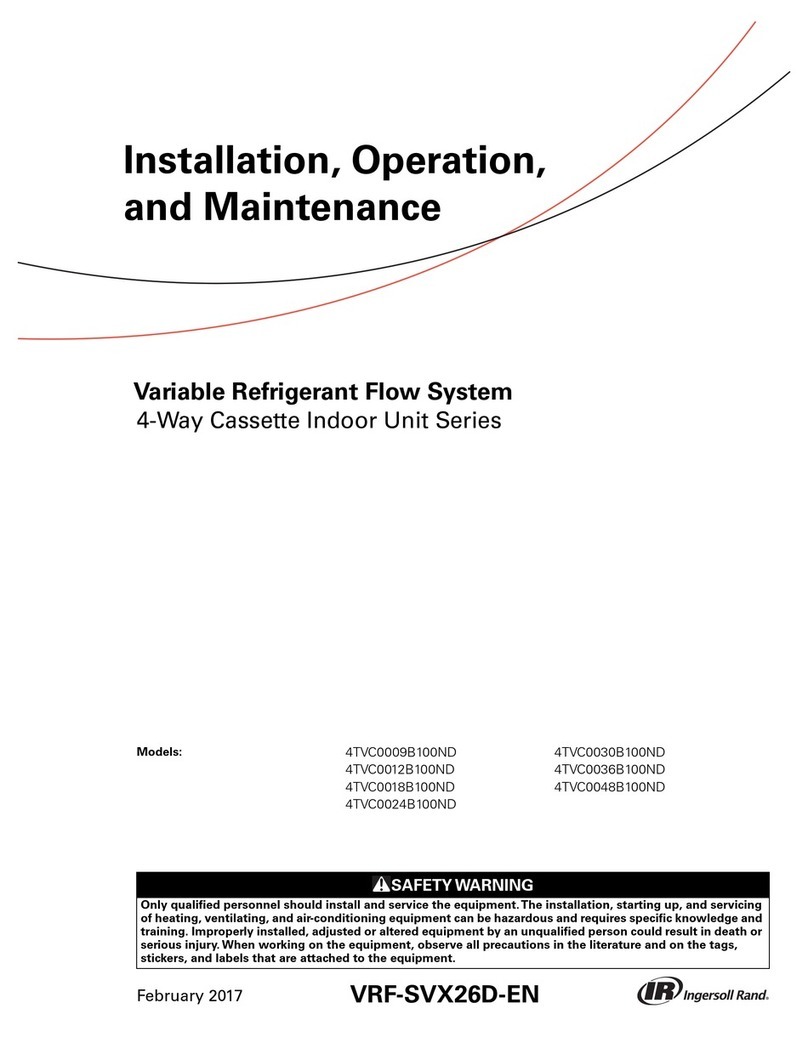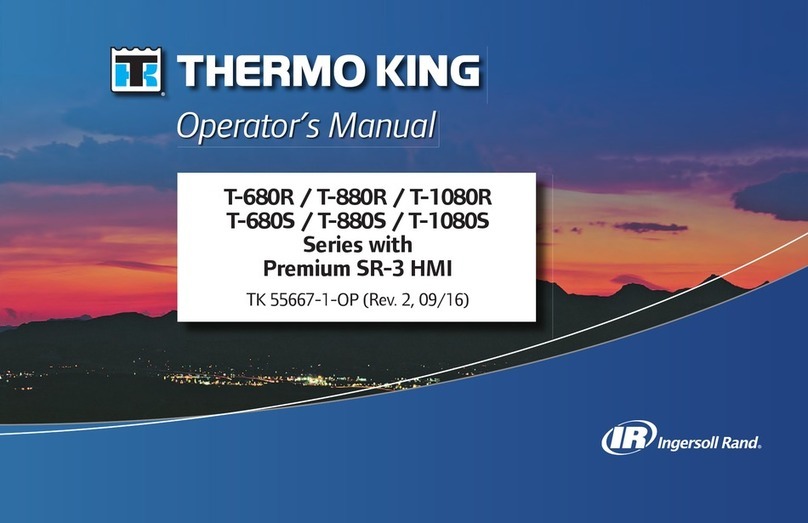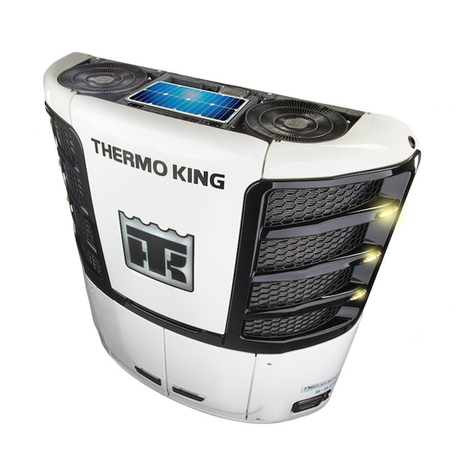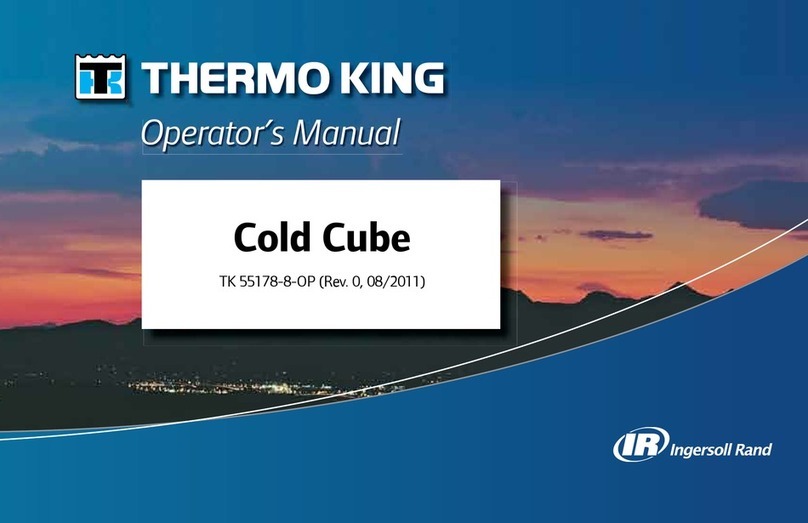
4
Installation summary for Precedent S-600 and S-700 Systems
The Precedent installs the same as the current SB with the following
exceptions:
1. Evaporator opening and mounting bolt locations on front wall of trailer did
not change. However, depending on your particular installation, two of the
mounting bolts lengths may need to be trimmed to 57.20 mm (2.25 in.)
long or they may interfere with the back of the control box and engine.See
“Mounting Hardware Requirements” on page 12.
2. The Precedent unit is approximately 6.00 inches wider than a SB which
may interfere with trailer mounted fresh air exchange doors.Thermo King
fresh air exchange option 070026 is also available. See “Evaporator
Opening Requirements” on page 10.
3. A new two point lifting bar is required to safely lift the unit during
installation. See “Lifting Bar Dimensions” on page 20.
4. A new fuel pump and bracket (TK supplied) will need to be installed onto
the trailer cross member directly above the fuel tank. All fuel line fittings
(TK supplied) are now nickel plated brass for S-600 and S-700 units. Any
additional fittings required for these units must also be nickel plated brass
or stainless steel. See “Installing the Fuel Pump and Harness” on
page 40.
5. Fuel supply and fuel return lines will need to be routed to the bottom of the
unit and fed up inside through the provided chase. The lines will need to
be cut to length and connected to the fuel filter or optional fuel heater with
the (TK supplied) nickel plated brass fittings for S-600 and S-700 units.
DO NOT use Teflon tape on fuel fittings. See “Installing the Fuel Lines”
on page 42.
6. It is recommended the installer provide a separate conduit or chase under
the trailer with a minimum inside diameter of 25.4 mm (1.00 in.) to
accommodate both the standard fuel pump harness and the ultrasonic fuel
sensor harness. See “Installing the UFLS Harness” on page 44.
7. The fuel pump harness (TK supplied) will need to be routed through a
conduit or chase (see #6) from the fuel pump to the bottom of unit. The
harness needs to be attached to wires provided under the unit and also to
the fuel pump using the (TK supplied) butt splice connectors and heat
shrink. Four connections total. See“Installing the Fuel Pump and
Harness” on page 40.
8. The Ultrasonic Fuel Level Sensor harness (TK Supplied) will need to be
routed from the fuel tank to the bottom of the unit through the same
conduit or chase (see #6) as the fuel pump harness. The harness needs to
be attached to wires provided inside the control box and to the sensor at
the tank using the (TK supplied) butt splice connectors and heat shrink.
Six connections total. See “Installing the UFLS Harness” on page 44.
9. SmartPower™ units will come pre-wired with the power cable and
receptacle secured inside the unit with tie bands for shipment. The installer
will need to secure the receptacle under the roadside of the unit with (TK
supplied) hardware. The cable needs to be secured to the trailer wall with
the (TK supplied) cable clamps and screws. See “Installing the Power
Receptacle (Option)” on page 62. This does not apply to units with the
Remote Receptacle option.
10. Battery installation requires the removal of the roadside door and a bracket
to gain access the battery tray and cables. See “Installing the Battery” on
page 64.
11. The bottom panel and two top covers are shipped in separate cardboard
boxes and will need to be installed with (TK supplied) hardware. The top
fairing (if installed) should be removed if it interferes with maximum
trailer height restrictions. See “Installing the Top Covers, Top Fairing
and Bottom Pan” on page 66.
12. It may take a few attempts to start a newly installed unit for the first time
as the fuel pump primes itself, fills the fuel lines and filter, and
automatically bleeds air from the system. The fuel pump can also be
primed separately by using the SR-4 controller’s Interface Board Test
Mode - Run Relay Function. This function operates only the fuel pump
and primes the fuel system without cranking the engine. See “Priming the
Fuel Pump and Programming the Controller” on page 70.
13. All status light options now require the harness be routed into the control
box and connected directly to the controller board. See “Installing the
Status Light (Option)” on page 46.






































